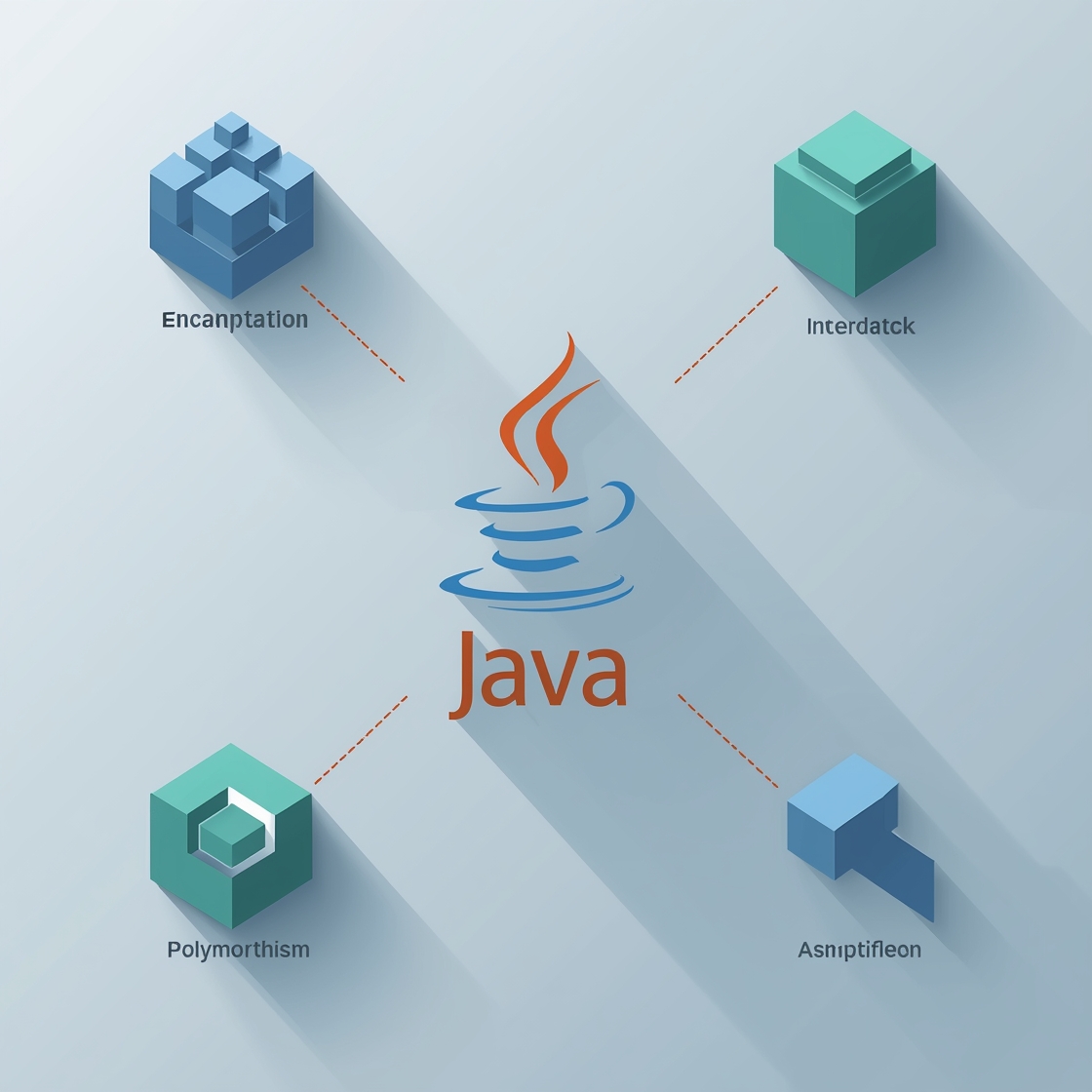Are you a Grade 12 IT student preparing for your upcoming exams? If Java is on your syllabus, mastering Object-Oriented Programming (OOP) is essential. OOP is the backbone of modern software development, and a solid understanding will boost your exam scores and lay a strong foundation for your future in tech. This guide breaks down Java OOP into digestible concepts, complete with examples, to help you ace those challenging questions!
The Four Pillars of Java OOP
1. Encapsulation: The Art of Data Hiding
Encapsulation bundles data (attributes) and methods (functions) that operate on the data into a single unit (a class). The key idea is data hiding: keeping the internal state of an object private and only exposing controlled access through public methods.
Why it matters for exams: Encapsulation protects an object’s integrity by preventing direct, uncontrolled modification of its data. You’ll often be asked to identify examples of encapsulation or write code demonstrating it using private access modifiers for attributes and public getter/setter methods.
Example:
public class Student {
private String name; // Private attribute
private int studentId;
public Student(String name, int studentId) {
this.name = name;
this.studentId = studentId;
}
// Public Getter method for name
public String getName() {
return name;
}
// Public Setter method for name
public void setName(String name) {
this.name = name;
}
// Public Getter method for studentId
public int getStudentId() {
return studentId;
}
// No setter for studentId if it should be immutable after creation
}
In this example, name and studentId are private, meaning they can only be accessed or modified within the Student class itself. getName(), setName(), and getStudentId() are public methods that provide controlled access.
2. Inheritance: Building on Existing Code
Inheritance allows a new class (the subclass or child class) to inherit properties and behaviors from an existing class (the superclass or parent class). It promotes code reusability and establishes a natural hierarchy between classes.
Why it matters for exams: Inheritance helps eliminate redundant code and makes your programs more efficient. Expect questions that ask you to create subclasses, override methods, or explain the benefits of inheritance.
Example:
// Superclass
public class Animal {
private String name;
public Animal(String name) {
this.name = name;
}
public void eat() {
System.out.println(name + " is eating.");
}
}
// Subclass
public class Dog extends Animal {
public Dog(String name) {
super(name);
}
public void bark() {
System.out.println("Woof!");
}
}
In this example, the Dog class inherits the name attribute and the eat() method from the Animal class. The Dog class also has its own method, bark().
3. Polymorphism: One Interface, Many Forms
Polymorphism allows objects of different classes to be treated as objects of a common superclass. It enables one interface to represent different underlying forms (data types). Polymorphism can be achieved through method overriding (runtime polymorphism) and method overloading (compile-time polymorphism).
Why it matters for exams: Polymorphism enhances flexibility and extensibility in your code. You might be asked to demonstrate polymorphism through method overriding or overloading.
Example:
public class Bird extends Animal {
public Bird(String name) {
super(name);
}
@Override
public void eat() {
System.out.println(getName() + " is pecking.");
}
}
public class Main {
public static void main(String[] args) {
Animal myAnimal = new Bird("Sparrow");
myAnimal.eat(); // Outputs: Sparrow is pecking.
}
}
In this example, the Bird class overrides the eat() method from the Animal class. When myAnimal.eat() is called, the overridden method in the Bird class is executed.
4. Abstraction: Hiding Complexity
Abstraction focuses on hiding the complex implementation details and showing only the essential features of the object. It helps reduce programming complexity and effort by allowing you to focus on what an object does rather than how it does it.
Why it matters for exams: Abstraction simplifies code maintenance and enhances security by preventing direct access to certain parts of the code. You might be asked to create abstract classes or interfaces to demonstrate abstraction.
Example:
// Abstract class
public abstract class Shape {
public abstract double area(); // Abstract method
}
// Concrete class
public class Circle extends Shape {
private double radius;
public Circle(double radius) {
this.radius = radius;
}
@Override
public double area() {
return Math.PI * radius * radius;
}
}
In this example, Shape is an abstract class with an abstract method area(). The Circle class extends Shape and provides the implementation for the area() method.
Tips for Mastering Java OOP
- Practice Regularly: Write code every day to reinforce your understanding of OOP concepts.
- Understand the Basics: Ensure you have a strong grasp of the four pillars of OOP.
- Use Diagrams: Visual aids like class diagrams can help you understand relationships between classes.
- Study Examples: Look at well-written OOP code to see how concepts are applied in real-world scenarios.
- Experiment: Try modifying existing code to see how changes affect the program’s behavior.
Common Mistakes to Avoid
- Overusing Inheritance: While inheritance is powerful, overusing it can lead to complex and inflexible code. Use it judiciously.
- Ignoring Encapsulation: Always keep your data private and use public methods to interact with it.
- Neglecting Abstraction: Focus on what an object does rather than how it does it to simplify your code.
- Forgetting Polymorphism: Leverage polymorphism to write flexible and reusable code.
Conclusion
Mastering Java OOP is crucial for your Grade 12 IT exams and beyond. By understanding and applying the four pillars of OOP—encapsulation, inheritance, polymorphism, and abstraction—you’ll be well-equipped to tackle exam questions and build robust software applications. Keep practicing, stay curious, and happy coding!
